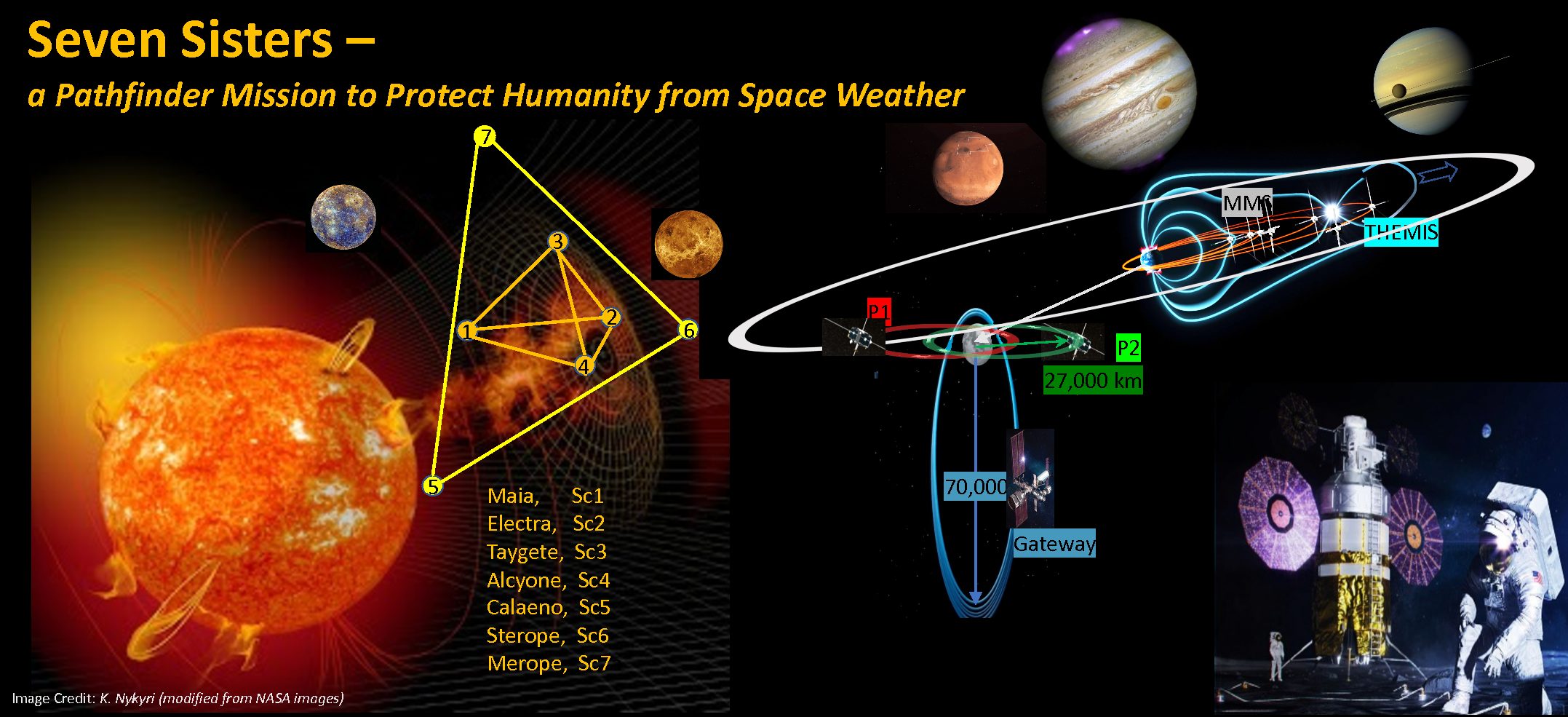Authors: Katariina Nykyri (Embry-Riddle Aeronautical University), Xuanye Ma (Embry-Riddle Aeronautical University), Roberto Cuellar Rangel (Embry-Riddle Aeronautical University), Jef Broll (LANL), Joe Borovsky (Space Science Institute), Brandon Burkholder (NASA, GSFC), Robert Ebert (SwRI), Mark Herring (Embry-Riddle Aeronautical University), Michael Hesse (NASA, Ames), Therese Jorgensen Moretto (NASA, Ames), Keiichi Ogasawara (SwRI), Merav Opher (Boston University), Jeff Parker (Advanced Space), Lauren De Moudt (Advanced Space), Mitchell Rosen (Advanced Space), Chris Russell (UCLA), David Sibeck (NASA, GSFC), Roy Tobert and Matthew Argall (UNH), Rick Wilder (UTA), Simon Wing (APL)
The solar wind exhibits large-scale and intermediate-scale structures whose presence and evolution directly affect Earth’s space environment and can impact key assets on and orbiting Earth. Phenomena such as coronal mass ejections, co-rotating interaction regions, and interplanetary shocks can have rapid and dramatic geospace effects via large-scale fluctuations in the interplanetary magnetic field, plasma pressure and density, and energetic particle energization and propagation. Satellite constellations at the Earth-Sun Lagrange 1 (L1) point can only provide solar wind plasma and magnetic field measurements 1 hr in advance of their arrival at Earth, limiting our ability to forecast significant events and avoid technological and societal disaster; the recent loss of 40 Starlink satellites due to geomagnetic storm activity, for example, highlights the need for 1-2 day advanced space weather forecasts. To prepare our technological society for the next decade and beyond, we need to have a network of upstream spacecraft at various radial distances from Sun whose data could be assimilated near real-time into space weather modeling. This could be achieved by placing constellations at the Mercury, Venus and Earth Lagrange points, which – with international collaboration is possible over – the coming decades.
As a first step, we propose the first of its kind Pathfinder mission, placing spacecraft into Venus-Sun Lagrange points to enable study of the physical processes responsible for the large- to intermediate-scale plasma and magnetic structures in the inner heliosphere and energetic particle dynamics. This mission will provide the first in-situ, synchronized, multi-point magnetic field and energetic particle measurements in a region only sparsely covered by single-point measurements from flybys of sun- and Mercury-bound missions since the end of Venus Express in 2014. When one or more of the Venus-Sun Lagrange points lies sunward from the Earth and/or further towards the west limb of the Sun, a coverage period of 50 Days/Earth year, these observations at r=0.7 Au would allow us to develop and test space weather warning algorithms based on coronagraphs and in-situ observations of the solar wind at at r=1.0 Au at Earth-Sun L1; even when not in the flight path of Earthwardbound solar wind, the multiscale nature of the observations would provide key insight into the propagation and evolution of solar wind structures.


